Surrounded By Water, Ohio River Valley Experiences Economic Resurgence
Six-state region at head of American recovery.
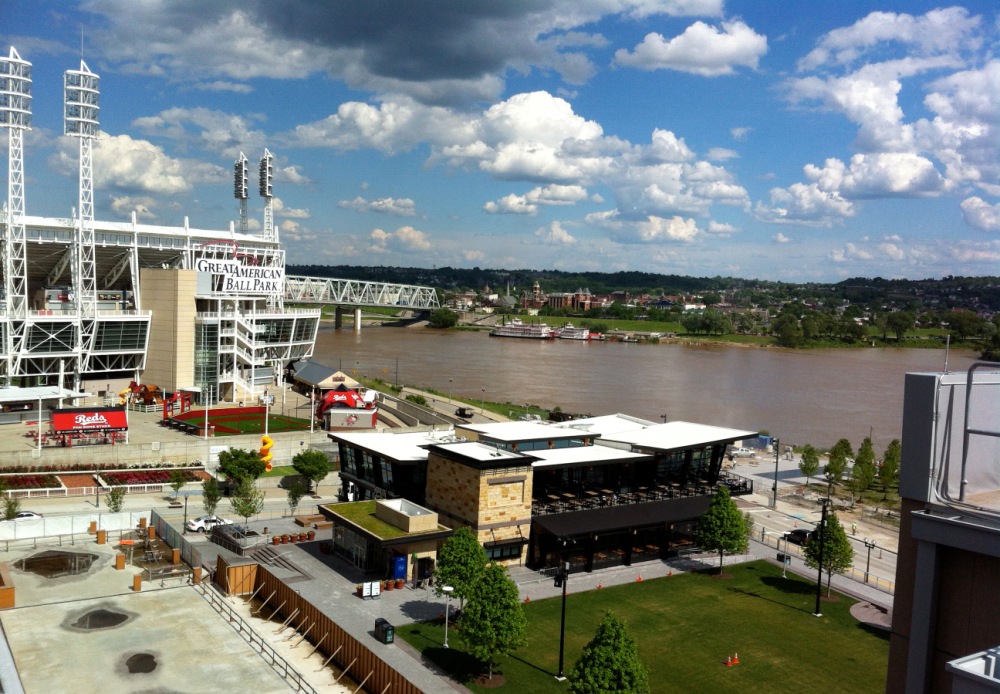
By Keith Schneider
Circle of Blue
OWENSBORO, KY. — Randy Simes, an urban planner in Cincinnati with a keen sense of observation, founded UrbanCincy.com in 2007 to report on the transitional neighborhoods, evolving culture, and reviving post-industrial economy of his native Queen City of nearly 300,000 residents.
But it wasn’t until he posted before-and-after-pictures from Google Street View last May, comparing changes in well-known Cincinnati street corners from 2007 to 2013, that Simes’ neighbors and colleagues embraced his boosterish view that the third largest city on the Ohio River really was on an economic roll.
The comparative photographs illustrated how diminished, deteriorated, troubled, and low-functioning sections of the city had, over six years, sprouted new offices, new housing, new parks, and fresh opportunity.
“It’s the most popular page on the site by far,” Simes said in an interview. “In some places the difference was really jaw-dropping. These kinds of changes have been going on here for awhile now. It’s really interesting because a lot of locals didn’t realize it was happening.”
By no means is Cincinnati’s slow awakening to economic promise and cultural transition unusual in the recovering cities in the six-state Ohio River Valley. It’s a story residents see unfold daily and ought to know. But to really accept its authenticity will take somebody else to tell them.
–Randy Simes, founder
UrbanCincy.com
And for good reason. For 40 years the narrative in the cities and shoreline counties served by the river was such a terrible tale of job losses, urban decay, and population decline that almost all of the 1,580-kilometer (981-mile) river corridor served essentially as a national economic sacrifice zone. Real work, the day-to-day toil and time that people invested in making things, and that defined for decades how communities viewed their relevance, disappeared seemingly overnight in the 1980s.
A region that in the middle years of the 20th century set world-class standards of income growth, manufacturing technology, working conditions, and middle class prosperity had by the end of century been driven by globalization, obsolescence, deindustrialization, and wage decline to the bottom of the national heap. In the 1990s just about the only new industrial installation constructed on the Ohio River was a hazardous waste incinerator built next door to an elementary school in East Liverpool, Ohio.
With the free fall in the Ohio River Valley states came a general weakness in America’s overall economy and disillusion in the national spirit.
A new century, and a lot of courageous collaborations by municipal leaders, business executives, and university administrators, has turned the page on the region’s prospects.
Rust Belt Rising
The new story has national import. Just as it has since the 18th century, when it was settled, the Ohio River Valley is supporting America’s economic recovery with job growth – in health care, transportation, energy, agriculture, marketing, and manufacturing – and with the development of new markets and new industries.
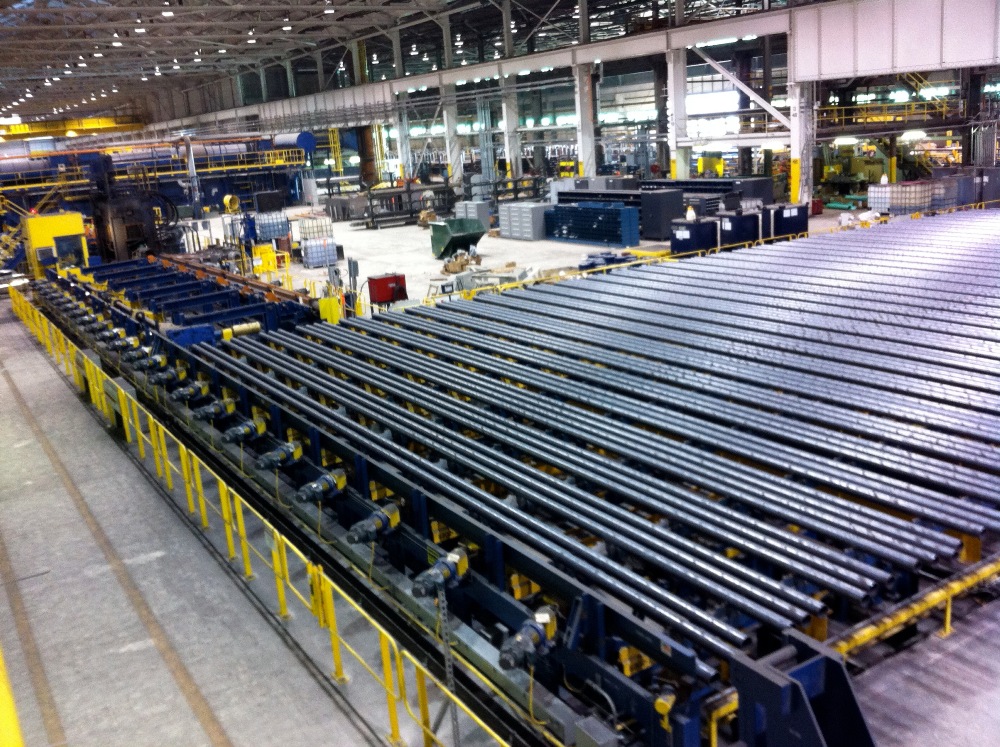
All of the river’s major metropolitan areas have higher rates of job growth and lower rates of unemployment than their states and the nation. Ohio and Indiana have been among the top new job generators in the United States for three years, according to the federal Bureau of Labor Statistics.
The region’s major universities are thriving and more closely linked on the Internet and peer-to-peer with their city governments than ever before. Researchers at Carnegie Mellon University and the University of Pittsburgh have helped turn that city into a center of bio-tech and manufacturing innovation.
Administrators at the University of Louisville, Louisville city officials, and several big health care companies collaborated to give rise to more than 500 companies that specialize in the new aging and wellness sector. The companies are building and managing assisted living centers, providing health insurance and home health care, designing medical equipment and developing health information management systems. These companies employ more than 20,000 professional-level workers, earn over $US 20 billion annually, and form the largest concentration of aging-care companies in the United States, according to city figures.
The boom in global grain consumption has produced a decade of prosperity in the soybean and corn production sectors in Ohio, Indiana, and Illinois, three of the nation’s top grain producing states. The agriculture surge and a construction boom in Asia and South America are pushing American farm and construction equipment manufacturers, most based in Ohio Valley states, to record sales.
Energy companies are investing more than $US 5 billion annually in new oil and gas wells in the three states of the upper Ohio Valley – Pennsylvania, West Virginia, and Ohio – and billions more in pipeline and processing infrastructure. The big spending is reviving the industrial unions and economies of Rust Belt towns and cities. Five new steel plants are operating now in Ohio, the first new plants built in the state since the early 1980s.
There are worries, of course. Industrial wages are not nearly at the same level they were in the 20th century and the number of working poor also is growing. Gentrification is pushing the elderly and impoverished out of old neighborhoods. New energy production, which is turning Pennsylvania into one of the largest natural gas producing regions in the world, has stirred concerns about water supply, contamination, and wastewater disposal. The agriculture boom is expanding the number of acres cultivated, and increasing the use of polluting chemicals that contaminate the river.
Indeed, a good bit of the new vitality, and its social, environmental, and economic consequences, has to do with water.
An Economic Hub
The Ohio River Valley is framed by water. The Great Lakes to the north. The Mississippi River to the West. The Ohio River itself supplies drinking water to 5 million people and is a source of process water for countless businesses, while being one of the most active transportation corridors in the world.
Long Ohio River tows, according to the U.S. Army Corps of Engineers, ship annually 225 million tons of commodities central to the national and global economy – steel, cement, grain, coal, aluminum, and heavy American-made equipment. The federal government ranks the Pittsburgh-Cincinnati-Louisville port network as the nation’s fourth largest behind Houston, Los Angeles, and New York-New Jersey ports.
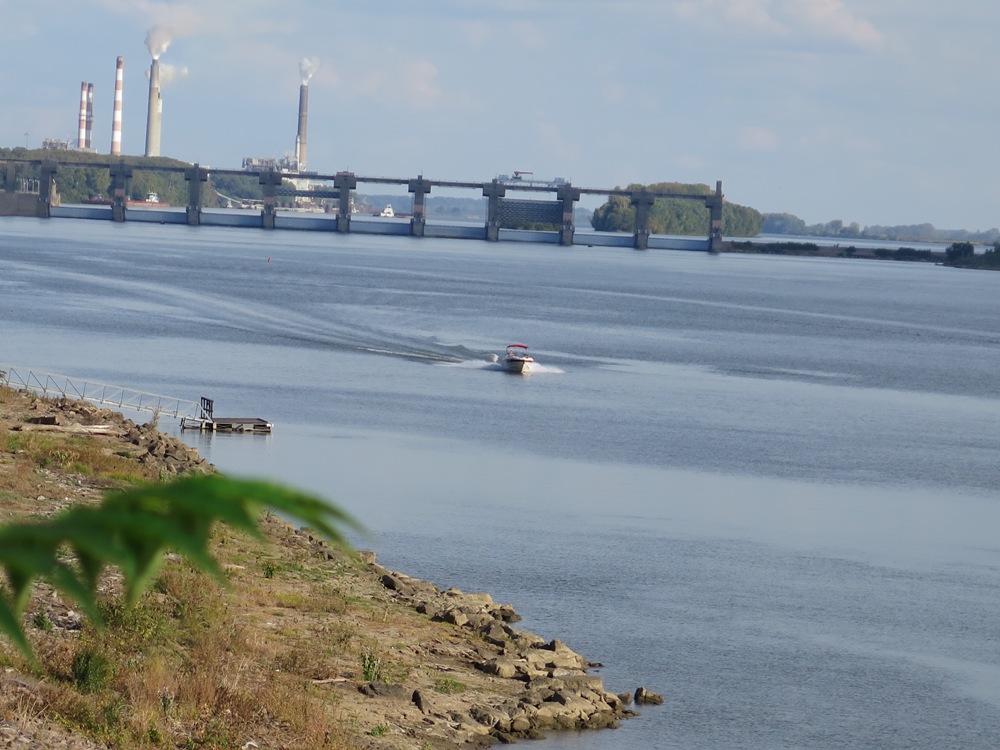
Such an active water transport network, capable of reaching from the East to the country’s center, encourages product development and other transport networks.
The deep whistles of interstate trains are a soundtrack of the region as they pull into and leave river towns traversed by busy tracks. Trains carry over 100 million tons of cargo along Ohio River shoreline routes that are some of the most active in the world, according to the federal Department of Transportation. The Louisville region hosts more than 35,000 trains annually.
Air transport hubs in Louisville and Cincinnati ship over 7 millions more tons of cargo each year, according to federal figures. The air cargo hubs, respectively the third and ninth largest in the country, employ nearly 25,000 people.
Ohio River water also is a recreational amenity that encourages urban redevelopment.
Fountains of Investment Bring New Growth
Here in Owensboro, Kentucky’s fourth largest city, four hours downstream from Cincinnati, the economy has been growing over 6 percent annually since 2010, producing more jobs and the lowest unemployment rate in the state.
One crucial reason for such vitality is the tax increase that Owensboro officials passed in 2009, the height of the recession, to raise $US 80 million to build a magnificent Ohio River shoreline park, reconstruct downtown streets, and build a new convention center. The public spending has leveraged $US 120 million in private spending for two new hotels, a new office building, dozens of new units of downtown housing and shops.
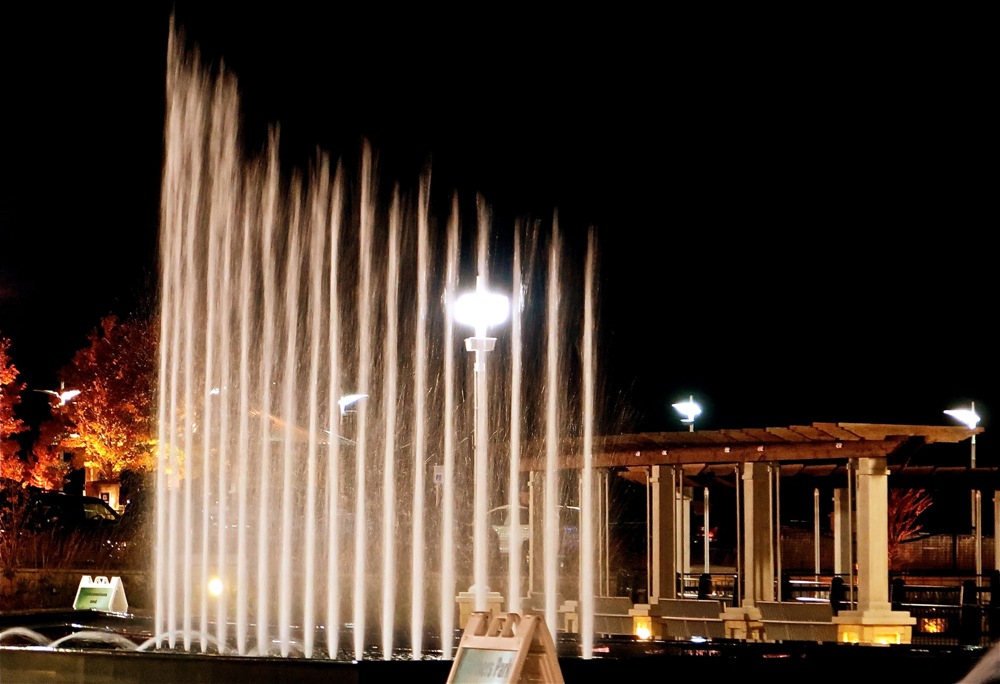
More investments are about to be announced, including a third hotel, said Bill Parrish, the city manager.
In just the last two years, the city’s dark and moribund downtown has been utterly transformed into a bustle of mercantile and recreational activity. Among the centering features of the development are a collection of fountains along the river’s edge that send jets of water high into the air, and pour frothing white cascades of water down stairsteps to the river. At night the fountains are lit and rise from shallow pools in lovely arcs of glimmering gold.
“The project was controversial,” said Joe Berry, a vice president at the Greater Owensboro Economic Development Corporation. “People grumbled about the cost and the new tax. But as soon as those fountains were turned on in 2012 the griping stopped. You just don’t hear it anymore.”
Similarly, Cincinnati’s revival as a modern urban center began with the reconstruction of 143-year-old Fountain Square in 2005, and the redevelopment of the business districts and residential neighborhoods around the city’s civic centerpiece. Since then, according to the Cincinnati Center City Development Corporation, the agency charged with managing the work, over $US 829 million in public and private funds have been invested to “support our four strategic goals to create great civic spaces, create high density mixed-use development, preserve historic structures and streetscapes and build diverse mixed-income neighborhoods supported by local businesses.”
The latest addition to Cincinnati’s now active urban core is DunnHumby’s 280,000-square-foot, $US 125 million North American headquarters on Sixth and Vine, around the corner from Fountain Square. The London-based company, which specializes in consumer science and marketing analytics, started its work in Cincinnati with four staffers in 2002. It is designing the new headquarters for 1,000 staff members, up from 700 currently employed in the city. The story of DunnHumby’s growth mirrors the expansion of Cincinnati’s professional community, especially its young and educated adults who have built a new industry of digital on- and off-line consumer analytics and research companies. DunnHumby, for instance, developed Kroger’s customer card program, which provides product discounts while it measures, catalogs, analyzes, and predicts consumer choice and purchasing behavior.
Along the city’s Ohio River shoreline, a second residential and recreational district is taking shape. It also was supported by a tax increase, a half-cent local sales tax approved in 1997 by residents of Cincinnati and Hamilton County that was spurred by the river’s draw. New revenue produced Cincinnati’s professional sports stadiums — the Cincinnati Bengals’ $US 455 million Paul Brown football stadium, which opened in 2000, and the $US 337 million Great American Ballpark for the Cincinnati Reds, which opened in 2003. The tax increase also supported a $US 322 million highway modernization that narrowed the Fort Washington Way expressway between the river and the central business district. Engineers shortened the overpasses over the sunken freeway, making it much easier for pedestrians to reach the river from downtown. A third use of the tax was the construction of a $US 120 million, 5,500-space underground parking garage that is designed to withstand the river’s periodic flooding. It serves as the out-of-the-floodplain dry pedestal on which more than $US 600 million in new private residential, retail, and recreational construction is perched. The new infrastructure includes a $US 120 million riverfront park.
It’s been a long time since Cincinnati’s shoreline has emerged as a hub of civic and economic vitality. “The Midwest and the Ohio River Valley have gone through such hard times,” said Randy Simes. “Our cities have decades of experience learning how to recover from their mistakes. They’ve been dealing with decay and how to fix it longer than other regions in the United States. The successes we’re now seeing in Cincinnati and some of the other cities here are decades in the making. There are lessons here for the rest of the country.”
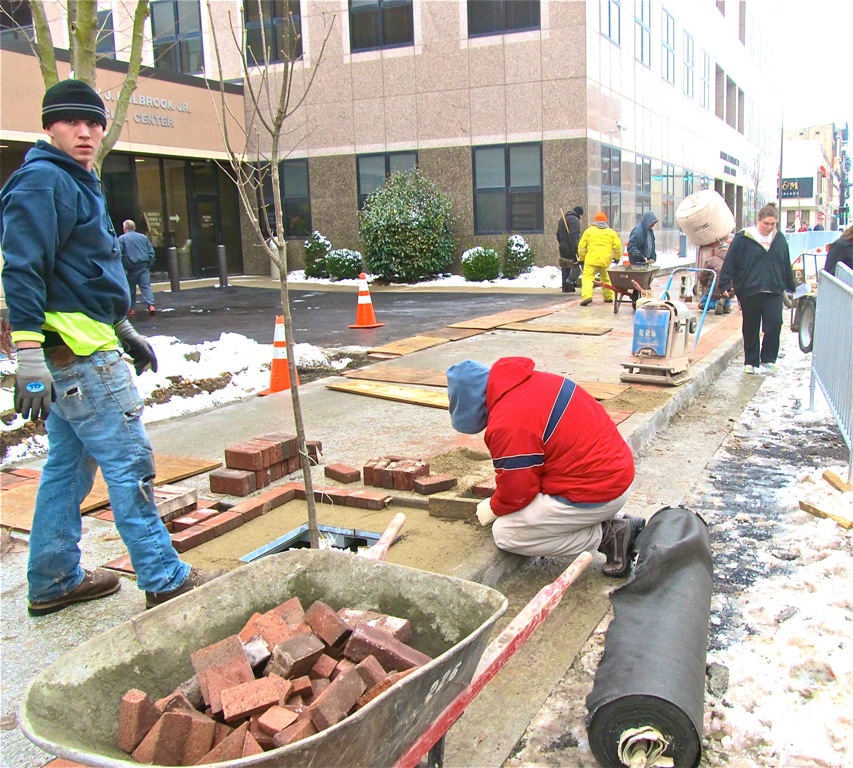
Circle of Blue’s senior editor and chief correspondent based in Traverse City, Michigan. He has reported on the contest for energy, food, and water in the era of climate change from six continents. Contact
Keith Schneider

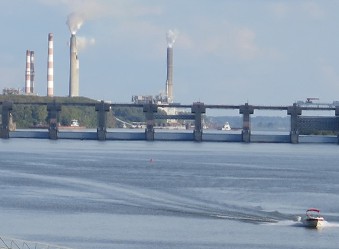

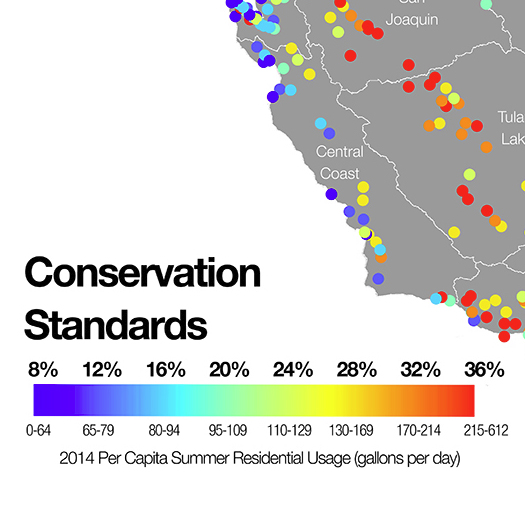
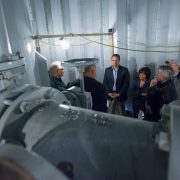
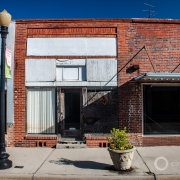


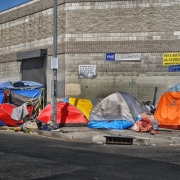

Leave a Reply
Want to join the discussion?Feel free to contribute!